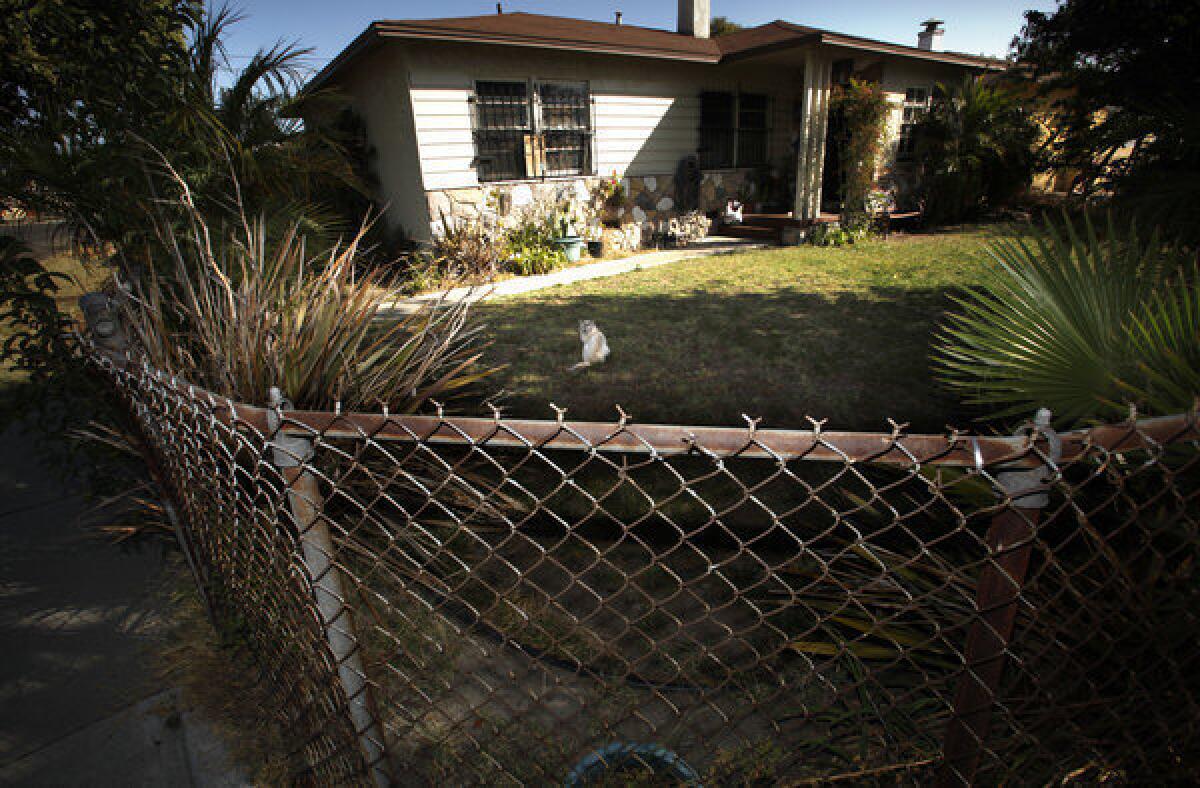Report: Rising rents hurting California’s affordability

- Share via
A combination of rising rents and falling government aid for affordable housing has dealt a blow to California’s lower-income residents, according to a new study.
Nearly 1 million extremely-low-income California households lack affordable, habitable homes, a need most pronounced in Southern California, a report released Tuesday found.
The foreclosure crisis displaced many homeowners, driving up demand and prices in the rental market. As the crisis eased over the last year, the housing recovery sent home prices soaring.
Incomes have failed to keep pace. The state’s median rent rose more than 20% from 2000 to 2012, while median incomes fell 8%, the report from the California Housing Partnership Corp. said.
GRAPHIC: Southern California’s housing recovery
Meanwhile, state and federal funding for below-market housing plunged 79% over the last five years, the study said.
“It’s creating a rapid change in our housing stock -- away from providing affordable, low-income housing toward housing the rich,” said Matt Schwartz, president of the California Housing Partnership.
Diminished government funds have reduced the production of new affordable units, stalling projects, he said.
“It has dramatically lowered the number of developments that can proceed,” Schwartz said.
Particularly hurtful, the study said, was the loss of redevelopment funds after local redevelopment agencies shut down two years ago. The agencies, which kept a portion of local property taxes, generated about $1 billion annually for affordable housing across California, but the state shuttered them to help ease its budget crisis.
The nonprofit, created by state lawmakers to preserve affordable units, proposed several policy recommendations to ease housing burdens for Californians, including an immediate injection of dollars from the general fund to focus on housing those at-risk of homelessness because of rising rents.
The report also urged passage of a bill that would create a permanent state source for affordable housing funding. The bill, SB-391, would impose additional fees on recorded real estate documents, except for those involved in a sale. Last year, the state Senate passed the bill and it is currently in the Assembly.
The bill has drawn opposition from the California Assn. of Realtors.
“In a state where housing affordability is low, the last thing government should do is to enact an arbitrary new real estate tax on real estate recordings,” the Realtors group said in a statement. “The call for renewed support for affordable housing is laudable, but Senate Bill 391 is the wrong approach.”
The shortage of affordable units for very low-income Californians is especially pronounced in Southern California, despite the region’s relative affordability compared to the tech-flush San Francisco Bay Area.
Schwartz said he didn’t know the reasons behind the disparity, but said a greater number of lower-income residents in the Southland could play a role.
There were 19 affordable units available per every 100 extremely-low-income renter households in Los Angeles County, the study said, citing an analysis of five-year Census Bureau estimates from 2006 to 2010. In San Francisco, there were 37. Orange and San Diego counties each had 18 available affordable units for every 100 poor households.
If the current trends continue, Schwartz said it would be devastating for lower-income households and California as a whole.
“At some point we are going to run out of available, low-income workers because no one is going to have a place to live,” he said.
More to Read
Inside the business of entertainment
The Wide Shot brings you news, analysis and insights on everything from streaming wars to production — and what it all means for the future.
You may occasionally receive promotional content from the Los Angeles Times.










